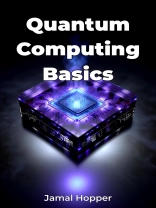‘Quantum Computing Basics’ offers a comprehensive exploration of how quantum mechanics is revolutionizing computational capabilities, presenting a paradigm shift from traditional binary computing to quantum information processing. The book masterfully breaks down complex concepts like qubits, superposition, and entanglement, explaining how these fundamental elements enable quantum computers to perform certain calculations exponentially faster than classical computers.
Through carefully structured content and accessible language, readers gain insight into how qubits can exist in multiple states simultaneously, unlocking unprecedented computational potential. The book’s three-section structure progressively builds understanding, beginning with essential mathematical and physical foundations before advancing to practical applications.
Particularly fascinating is the treatment of quantum algorithms, including Shor’s factoring algorithm and Grover’s search algorithm, which demonstrate quantum computing’s practical advantages. The text bridges theoretical physics with real-world applications in cryptography, drug discovery, and optimization problems, making complex concepts accessible to readers with basic computing knowledge but without requiring advanced physics expertise.
What sets this book apart is its balanced approach to quantum computing’s future, neither overhyping immediate possibilities nor understating long-term potential. Drawing from peer-reviewed research and industry developments, it provides a realistic assessment of current technological limitations while illuminating the field’s transformative potential.
The inclusion of practical examples, visual representations, and carefully chosen analogies helps readers grasp complex quantum concepts, making it an invaluable resource for computer scientists, software developers, and technically-minded professionals preparing for the quantum computing revolution.












